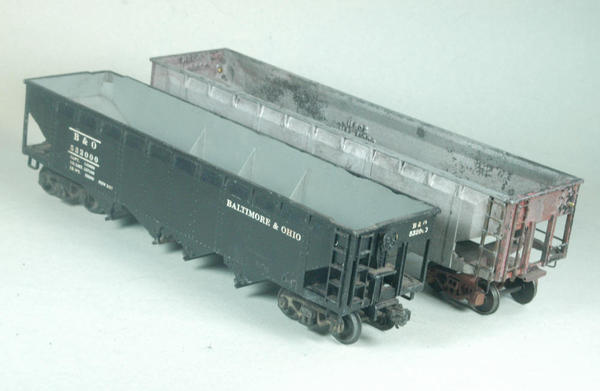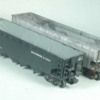It so happens that I asked on the ACE Trains Owner's Club Forum a few weeks ago - and I asked Allen Levy on Saturday - why the world took up 1:87 scale for HO, which is half the British 0 Scale of 1:43.5. Apparently, no one knows!
But, I can tell you a little about historic 0 Scale, for it was originally 1:48 in the UK too. The problem arose when German manufacturers were comissioned to make realistic British model locomotives. As you all know, our prototype loading gauge is small, so the models were smaller and the German's mechanisms would not fit. Therefore, the British scale was enlarged sufficiently to make UK train models the same physical size as Continental ones.
Bear in mind that the standardised gauges came first; Marklin in 1891 seems to be the agreed foundation, but there were not really commercial scale model trains until Bassett-Lowke comissioned the German makers from 1900, and particularly so from about 1910 when the proportions of the 0 scale B-L model locomotives started to become trulyaccurate. It was at this point that the increase in size was implemented for UK models.
I presume the UK originally, and the USA/Canada still, adopted 1:48 since 1/4" scale is so easy for those employing Imperial measurement. But, there never would have been a problem fitting German mechanisms in trains exported to the US, since your prototypes were larger in the first place. I presume this is why your scale never changed.
British Gauge H0 had a similar problem in the 1930s, and the scale was changed from 1:87 to 1:76, which it retains to this day, and it is known as 00 Gauge, after Hornby-Dublo, introduced in 1938.
As it happens, US, UK and European trains all look well together, since the scales vary as the reciprocal of the prototype measurements. We know this is not right, but our eyes tell us it's fine.
Of course, Museum quality stuff has a problem if truly scale wheels are too close together, narrowing the frames - or too far apart, thus messing with the cylinder/connecting rod/motion alignment.
If trains did not need mechanisms, and particularly if they did not need to negotiate sharp bends, the tinplate makers 100 years ago could do remarkable things. The "N-Gauge" Bing LNWR 4-4-0 and coaches, 1/16" scale, and the 1/4"scale Carette promotional model of the Caledonian Railway 4-6-0 locomotive "Cardean" and the 65' 6" West Coast Joint Stock 12-wheel coach that went with it, are perfect 1/4" scale reproductions which stand comparision with anything ever made. But neither were intended to run on a practical radius!







